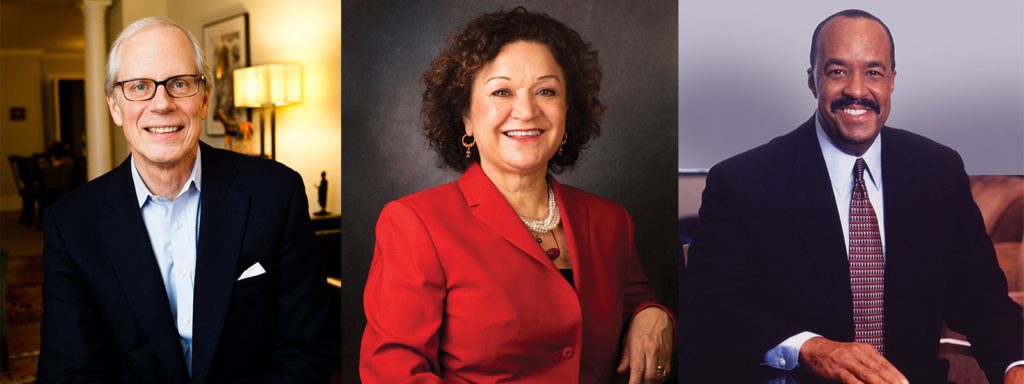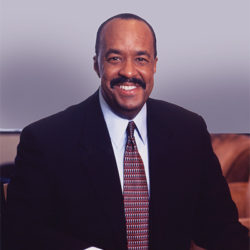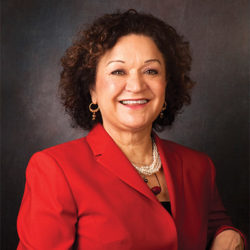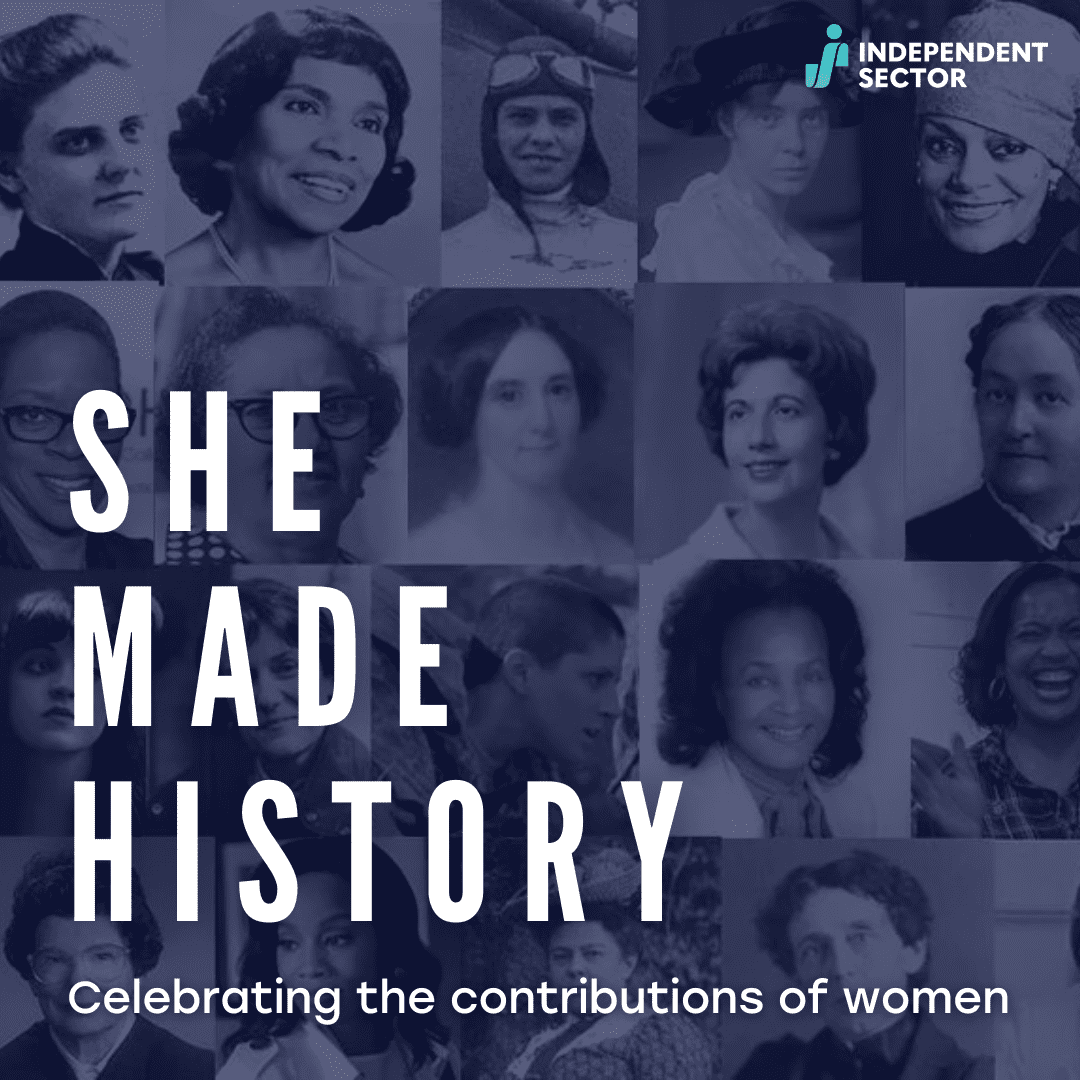By Debra Rainey
“We are please – and also frustrated.”
In an April 11, 2016 op-ed in The Chronicle of Philanthropy, the three D5 Coalition co-chairs weighed in on their “five-year collaborative effort to improve diversity, equity, and inclusion in the foundation world,” saying: “We are pleased – and also frustrated. There have been pockets of progress in the last five years, but philanthropy still does not adequately reflect the diversity of the nation.”
They cited areas of progress, including:
- more organizations voluntarily making available their demographic data
- more organizations collecting grantees’ demographic data
- an increase in diversity among executives and trustees in some areas of the country
exploration of diversity, equity, and inclusion in philanthropy at more conferences and meetings, and - the broadening of the definition of diversity to include sexual orientation and disability, as well as race and gender.
They also expressed frustration about the relative lack of growth in the number of CEOs of color over the five years of their work, noting that “philanthropy remains on a par with country clubs when it comes to exclusivity, even eight years after the election of the first African American president, and amid a 2016 campaign in which we have seen two Latinos, two women, and an African American vie as serious candidates.”
Concluding with thoughts on what should come next, the D5 co-chairs underscored the need for more active involvement by board leadership in DEI conversations, and the need to more deeply ingrain a commitment to diversity in philanthropic infrastructure organizations.
 Dr. Robert K. Ross
Dr. Robert K. Ross
President and CEO, The California Endowment
The California Endowment is a private, statewide health foundation with a mission to expand access to affordable, quality health care for underserved individuals and communities, and to promote fundamental improvements in the health status of all Californians.
“What’s on the front pages in this nation right now are issues of diversity and inclusion, the question of who’s in and who’s out of the American dream and the promise of America. Even the presidential election is in many ways focused on that. Philanthropy should be leading the nation’s conversation on diversity and inclusion, and by example, and we’re not. There are a number of us who are committed to seeing philanthropy advance a more inclusive view of America, and that begins in the boardrooms and executive suites across the country. We have to stay at it. The nation needs philanthropy to be more assertive on this front.”
Dr. Ross says the impetus to launch a focused and voluntary effort to advance diversity, equity, and inclusion in the philanthropic sector is directly linked to California state legislation proposed in February 2007. The bill, AB 624, sought to compel foundations in the state with assets higher than $250 million to make public the racial and gender makeup of their boards and staffs, along with the number of grants and dollar percentages being awarded to organizations headed by and serving minority groups, and gay, lesbian, bisexual, and transgender people.
While the legislation was eventually withdrawn, Dr. Ross says it was seen by many in the charitable sector as an “assault on philanthropy.” He and his board “fully understood the intent and problem they were trying to solve, but we felt philanthropy should be exerting voluntary leadership to
improve diversity and inclusion efforts, and that we should be better than needing to be legislatively compelled to do so.”
Acknowledging that the issue had plagued philanthropy and the sector for decades, he offered, “While there had been a lot of complaining, hand wringing, and frustration, what was missing for me was any structured coalition, strategy, or concerted action to address the issue.” And so the legislative scare became a “catalytic moment” of sorts, spurring him to engage other philanthropic leaders in a discussion about “how the sector can advance a voluntary effort and lead a national conversation
about diversity and inclusion and take action.”
Dr. Ross says he and his D5 co-chairs are frustrated by the lack of overall progress in the sector during the last five years, but they also are seeing pockets of optimism. He cites as an example the “appreciative increase in people of color at major foundations, including the Ford Foundation, Knight Foundation, [W.K.] Kellogg Foundation, and Andrew W. Mellon Foundation, all led by people of color. We would not have seen that 20 years ago.”
Regarding board diversity, Dr. Ross says D5’s initial strategy concentrated more on data and staff. “When we developed D5’s strategy five years ago, we focused on improving data collection at the staff level and executive level, and engaging staff and executives of infrastructure groups. Admitting that it was probably a lapse of strategy not to have focused attention on trustees, he adds, “It’s in the boardroom where the culture of leadership emerges at a foundation, and where the authorizing
environment to emphasize diversity and inclusion comes from, and if you don’t have champions in the boardroom, you’re just not going to get there.”
Dr. Ross says he and his fellow D5 co-chairs are open to ideas and suggestions from the field about how to more effectively engage trustees at foundations. “Many of them are willing and able to provide leadership,” he says. “They just have not been asked.”
He also says achieving measurable progress is turning out to be a longer-term proposition than he imagined. “We’re going to need at least another five years of strategy and work. We’re seeing pockets and evidence of progress in terms of the topic of diversity and inclusion in the field, but the numbers haven’t moved significantly, and so we need more time.”
The three D5 co-chairs will host a two-day strategy retreat in New York in October 2016 to include CEOs and trustees to do a deep dive on what is going well with D5, what isn’t, gaps in the strategy, and how to address those gaps.
“I would like to see every board of every foundation in the country over the next year have one conversation in their boardroom about race and inclusion in America, and what that particular foundation and board can do to help solve the problem in their community,” says Dr. Ross. “It’s a leadership conversation, a boardroom and CEO conversation, and we need to docket it on the agenda and set aside some time, in the same way we would set aside time to go over audit findings. Boardrooms need to audit their leadership on diversity and inclusion in America. If I had one plea to my colleagues in the field of philanthropy, that’s what it would be.”
 Luz Vega-Marquis
Luz Vega-Marquis
President and CEO, Marguerite Casey Foundation
The Marguerite Casey Foundation exists to help low-income families strengthen their voice and mobilize their communities in order to achieve a more just and equitable society for all.
In addition to being president and CEO of the Marguerite Casey Foundation, Luz Vega-Marquis also is the founder of Hispanics in Philanthropy. “I’ve been in philanthropy a long time. During my first couple of years, pushing the notion of equity and inclusion never yielded much progress. While there’s still much work to do, she says, “it feels as though the pace of change has accelerated in terms of infrastructure organizations and working with various regions of the country to get a stronger conversation going.”
Vega-Marquis said Marguerite Casey was founded on the principles of diversity, equity, and inclusion, and the foundation executes on those principles throughout their grantmaking and staffing.
“Given our mission and what we do, we work in poor communities across the country, and there are a disproportionate number of people of color. So it is important to us that our grantees and the communities we fund see themselves reflected in the people who are doing the work. Secondly, one of our values is confronting racism and discrimination, and so we reflect the voices, experiences, and interests of diverse cultural and social groups in our mix. Fortunately, I didn’t have to drag my board kicking and screaming to do these things. This is what they want to do.”
To those who say it is difficult to find people with a diverse perspective or background who are qualified to head a foundation, Vega-Marquis says, “Hogwash.”
“All of my program team members are people of color. My leadership team includes four women, excluding me, and 60 percent are women of color. Fifty percent of my general staff are people of color, in Seattle, no less.”
Vega-Marquis says with the help of D5 resources, a field cohort was created in the Northwest that included Alaska, Washington, and Oregon to discuss DEI challenges. They created a fellowship program intended to expand opportunities for people of color. “The pool was enormous. Right now we have nine superb people of color in the program, but we had 75 or 100 people in the pool, all qualified. If you make the commitment to doing this, and you believe it’s important, you will find the resources and network. There are search firms that specialize in finding diverse candidates. I think what often is missing is the commitment to see change.”
Vega-Marquis cites her colleague Doug Stamm, CEO of the Meyer Memorial Trust in Oregon, as an example of sector leaders who are committed to change, noting “the face of the foundation is totally different now than when I met him three years ago. I wish more leaders were like him.”
“Are we going to remain successful institutions in the future,” Vega-Marquis asks, “or do we want to only talk to each other and make grants to organizations whose leadership looks like us? We must recognize how the world has changed around us. If you’re going to be a relevant institution in the 21st century in the United States, you need to pay attention to these issues. We’re getting to a tipping point where we can see widespread change, but our work is not done.”
 Stephen B. Heintz
Stephen B. Heintz
President, Rockefeller Brothers Fund
The Rockefeller Brothers Fund advances social change that contributes to a more just, sustainable, and peaceful world. Stephen B. Heintz, president of the Rockefeller Brothers Fund, also served as chair of Independent Sector’s board in 2015 during the development of a 20-year strategic vision to better enable the charitable community to respond to the challenges and opportunities of the future. The process identified external forces that would have a profound effect on the sector in the future, including climate change and inequality.
Heintz says inequality and climate change are overarching challenges that also are related to each other in important ways, calling them “the defining problems of our time.”
“There are clearly many other problems, but inequality is at the root of many of them, whether you think of the need for improved education, or healthcare, or improved policing in our communities, or the problems of poverty. The growing and persistent inequality in our society exacerbates each one of these problems. And so if we are to really make progress on any of them, we have to address the inequality problem.”
While he’s been privileged to be one of the D5 co-chairs and notes that some progress has been made over the five-year process, Heintz says it’s not enough.
“Our sector remains very diverse in many ways, but when it comes to leadership at the executive level and leadership on boards, we are not nearly as diverse as we need to be and frankly, we’re not even as diverse as the private sector, which has made really significant gains in that regard.”
Looking ahead, Heintz says the October strategy retreat where the D5 co-chairs and other philanthropic leaders will consider what comes next will take place at The Pocantico Center, the Rockefeller Brothers Fund’s venue for conferences and meetings, located 20 miles north of Manhattan.
“We will think through where we are in this work and what needs to happen to embed the legacy of the D5 initiative in the philanthropic community in a way that’s going to produce even more change and greater attention to the questions of diversity in the future.”
Heintz pointed to the tragic killings and events in Dallas as evidence of how deep the problems of race and identity remain in our society. “Philanthropy has an important responsibility to contribute to the conversation that needs to happen in our country about race, and in order to do that effectively, we have to be as diverse as the community we are trying to serve. We are making progress, but we have much more progress that needs to be made.”
Debra Rainey is the manager of grants development at Independent Sector.

 Dr. Robert K. Ross
Dr. Robert K. Ross Luz Vega-Marquis
Luz Vega-Marquis Stephen B. Heintz
Stephen B. Heintz

